It seems like the questions around histamine intolerance and wanting a high histamine food list are coming in more often than ever before.
So I wanted to spend the time researching and addressing any and all histamine intolerance information for you today.
Histamine (2-[4-imidazolyl]ethylamine) was discovered in 1910 by Dale and Laidlaw.
It was identified as a mediator of anaphylactic reactions in 1932.
All of the below (unless otherwise noted/sourced) taken from the Chris Kresser ADAPT Academy Program I am part of.
What is Histamine?

Histamine is a natural chemical in our bodies that acts as a neurotransmitter, playing a role in wakefulness, appetite regulation, and cognitive functions.
It is involved in muscle contraction, brain function, and the regulation of stomach acid.
It also plays an important role in immune cells and the immune system.
Histamine levels in the blood from 0.3 to 1.0 nanograms per milliliter are considered to be normal.
Everyone has a threshold of histamine that they can tolerate without symptoms of excess histamine.
What Does a Histamine Intolerance Look Like?
When there is too much histamine, it can cause allergy-like symptoms with the following:
- Redness
- Swelling
- Itchiness
- Hives
- Red eyes
- Nasal congestion
- Runny nose
- Headache

(Figure resource HERE.)
Skin rashes can also be part of these allergy symptoms known colloquially as “histamine intolerance.”
This typically refers to a defect in the body’s ability to break down histamine-rich foods and/or a shift in the gut microbiota that leads to an increase in histamine-producing intestinal bacteria.
Dr. Amy Myers also points out these other signs/symptoms:
- Do you experience unexplained headaches or anxiety?
- What about irregular menstrual cycles?
- Does your face flush when you drink red wine?
- Do you get an itchy tongue or runny nose when you eat bananas, avocados, or eggplants?
If you answered yes to any of these questions, then you could have a histamine intolerance.
Note: Recent research suggests that what many patients and clinicians have referred to as histamine intolerance may be better characterized as mast cell activation syndrome (MCAS).
MCAS is a condition involving hyperactivity of the mast cells that produce histamine.
The etiology and pathology of MCAS are still poorly understood, and it is likely a heterogeneous disorder with causes and expressions that vary among individuals.
DAO Enzyme
“Once formed, histamine is either stored or broken down by an enzyme.
Histamine in the central nervous system is broken down primarily by histamine N-methyltransferase (HMT), while histamine in the digestive tract is broken down primarily by diamine oxidase (DAO).
Though both enzymes play an important role in histamine breakdown, the American Society for Clinical Nutrition found that DAO is the main enzyme responsible for breaking down ingested histamine.
So if you present with low levels of DAO, you likely have symptoms of histamine intolerance.”
Causes of Low DAO
Dr. Amy Myers lists the following as causes of low DAO:
- Gluten intolerance
- Leaky gut
- SIBO
- DAO-blocking foods: alcohol, energy drinks, and tea
- Genetic mutations (common in people of Asian-descent)
- Inflammation from Crohn’s, ulcerative colitis, Celiac disease, and (other) inflammatory bowel disease.
- Medications:
- Non-steroidal anti-inflammatory drugs (NSAIDs) (ibuprofen, aspirin)
- Antidepressants (Cymbalta, Effexor, Prozac, Zoloft)
- Immune modulators (Humira, Enbrel, Plaquenil)
- Antiarrhythmics (propanolol, metaprolol, Cardizem, Norvasc)
- Antihistamines (Allegra, Zyrtec, Benadryl)
- Histamine (H2) blockers (Tagamet, Pepcid, Zantac)
I share these because, just look – those are all tied to poor gut health.
How to Test for Histamine Intolerance
Histamine intolerance is unlike other food allergies or food intolerances in that the response is cumulative, not immediate.
The example Chris Kresser gives is this: Imagine it like a cup of water. When the cup is very full (high levels of histamine in the diet), even a drop of additional water will cause the cup to overflow (release of histamine symptoms activated).
But when the cup is less full, it would take more water (histamine) to cause a response and histamine release.
This makes histamine intolerance tricky to recognize.
Furthermore, there aren’t any (super) reliable lab tests for accurately diagnosing MCAS or the histamine load and intolerance because many people with MCAS have normal serum histamine and DAO levels.
There are blood tests for DAO levels. However, make note that low DAO levels can suggest intolerance but don’t always confirm it, as other factors can affect histamine metabolism.
You could also consider a skin prick or allergy test, which measures whether your symptoms are due to an allergic reaction rather than histamine intolerance.
But again, this doesn’t diagnose histamine intolerance. It can help rule out allergies as the cause of symptoms.
Finally, there is a Urine Test for Methylhistamine. Methylhistamine, a histamine breakdown product, is found in urine.
Keep in mind if you choose this route that results can be affected by other health conditions or dietary histamine intake.
So, how to diagnose it?
It might be more based upon symptoms.
For example, if you have a skin condition, consider that you may have high histamine levels and a histamine intolerance might be the underlying cause—especially if you have one or more of the allergy-related symptoms mentioned above.
In these cases, a low-histamine diet with low-histamine foods can be started to bring histamine levels down and hopefully clear up his or her skin.

(Figure resource HERE.)
High Histamine Food List
Click HERE to save this list for later.
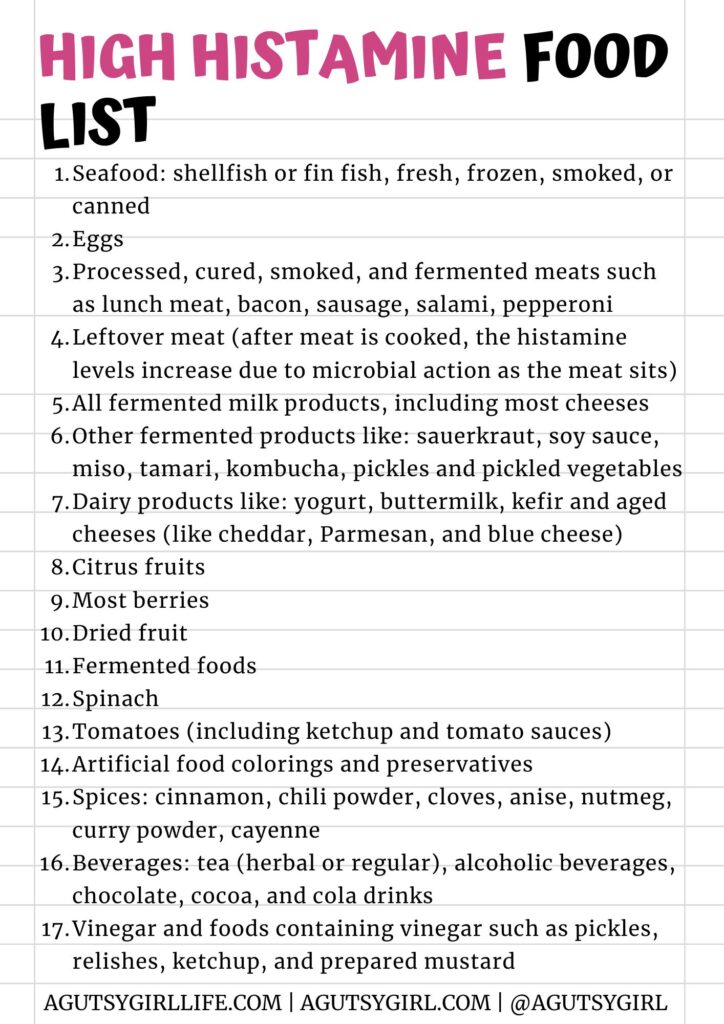
Unfortunately, similar to the Low-FODMAP Diet, many of the foods that contain histamine or provoke histamine production in the body are otherwise healthy foods.
For example, fermented foods, which have extensive benefits, are some of the biggest culprits, since histamine is a byproduct of the fermentation process.
(As a side note, Chris mentions that if you have a strong reaction to fermented foods like cheese, wine, kefir, and yogurt, it’s a classic sign of histamine intolerance.)
Nonetheless here is a high histamines food list.
List of foods to reduce or eliminate when following a low histamine diet:
- Seafood: shellfish or fin fish, fresh, frozen, smoked, or canned
- Eggs
- Processed, cured, smoked, and fermented meats such as lunch meat, bacon, sausage, salami, pepperoni
- Leftover meat (after meat is cooked, the histamine levels increase due to microbial action as the meat sits)
- All fermented milk products, including most cheeses
- Other fermented products like: sauerkraut, soy sauce, miso, tamari, kombucha, pickles and pickled vegetables
- Dairy products like: yogurt, buttermilk, kefir and aged cheeses (like cheddar, Parmesan, and blue cheese)
- Citrus fruits
- Most berries
- Dried fruit
- Fermented foods
- Spinach
- Tomatoes (including ketchup and tomato sauces)
- Artificial food colorings and preservatives
- Spices: cinnamon, chili powder, cloves, anise, nutmeg, curry powder, cayenne
- Beverages: tea (herbal or regular), alcoholic beverages, chocolate, cocoa, and cola drinks
- Vinegar and foods containing vinegar such as pickles, relishes, ketchup, and prepared mustard
Note: Many probiotics contain histamines, which is why that specific probiotic might not work for you (as a reader commented below).
The probiotic I recommend for those with SIBO/histamine intolerance is the Just Thrive probiotic.
Learn all about Probiotic Species and Strains HERE.
List of low histamine foods to enjoy when following a low-histamine diet:
First and foremost, freshness through fresh foods is key if you have a histamine intolerance.
Beyond that, here are some specific foods you can still enjoy:
- Freshly cooked meat or poultry (unprocessed foods)
- Fresh fish
- Cooked eggs
- Gluten-free grains: rice, quinoa, corn, millet, amaranth, teff
- Pure peanut butter
- Fresh fruits (not overly ripe, dried and/or canned): mango, pear, watermelon, kiwi, grapes, apple, blueberries, cranberries, honeydew melon, cantaloupe
- Fresh vegetables like zucchini, cucumber, carrots, sweet potatoes, broccoli, cauliflower, green beans, lettuce and leafy greens, celery, bell peppers (except tomatoes, spinach, avocado, and eggplant)
- Dairy substitutes: coconut milk, rice milk, hemp milk, almond milk (with no food additives)
- Cooking oils: olive oil, coconut oil, avocado oil
- Leafy herbs and spices; basil, parsley, cilantro, dill
- Herbal teas (chamomile, rooibos)
Click HERE to save this list for later.
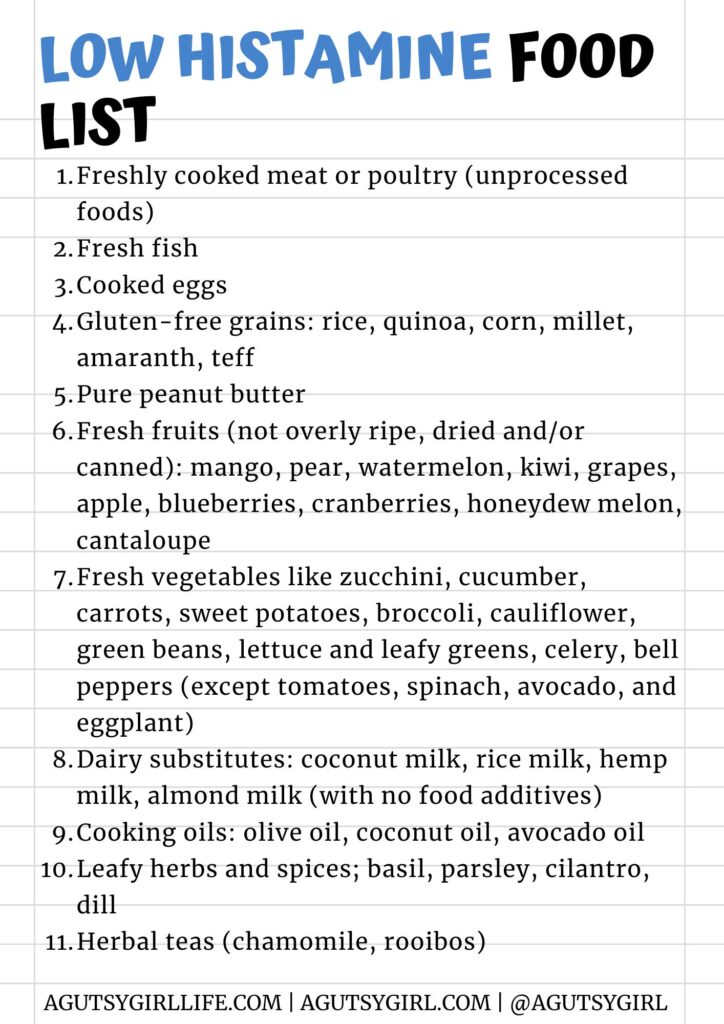
Top 4 Things to Do / Keep in Mind When Following a Low-Histamine Diet
If you have health conditions where the amount of histamine is important to pay attention to, then here are 4 things to to / keep in mind:
1] Track your reactions.
Individual tolerance will vary. So one of the best ways to know your personal tolerance is by keeping a food diary to track any particular food.
The food journal I have created is a gut healing journaling SYSTEM, so in addition to doing the mundane tracking tasks you may have heard about, the journal shows you how to do it in a comprehensive way.
There are two you can choose from:
- 28-day gut healing journaling SYSTEM, Ahara Dinacharya
- 90-day gut healing journaling SYSTEM, Healing Blooms from Within
Either are a great option for getting started with tracking high-histamine foods, any allergic reaction you might notice, and even keeping track of a full elimination diet.
2] Freshness matters.
In the food lists from above, you noticed a lot verbiage around fresh, freshness, and unprocessed.
That’s because this matters.
Histamine levels increase in foods as they age.
Choose fresh meats and consume them promptly or freeze them.
3] Read labels.
I’ve already taught you how to read labels for gut health.
But you really need to pay attention for reducing the histamine responses.
Some packaged foods may contain hidden high-histamine ingredients (like yeast extract, malt vinegar, or citric acid).
Get out your magnifying glass, and don’t be afraid to study the food items in your grocery cart.
4] Avoid additives.
I’m always saying that we should avoid additives, but with a histamine intolerance you really need to be aware.
Avoid preservatives, artificial flavors, and stabilizers like carrageenan and MSG, as they can aggravate symptoms.
Will I always have to avoid high histamine content foods?
The good news is that you might not always need to avoid the high histamine foods list.
Most people can tolerate histamine foods again once they heal the gut. Ding. Ding.
In fact, Dr. Amy Myers says her histamine intolerance was caused by SIBO (small intestinal bacterial overgrowth).
And by the way, the SIBO – histamine connection is strong.
Furthermore, many of the symptoms like bloating, diarrhea, constipation, fatigue, headaches or migraines, skin issues, and heart palpitations overlap between SIBO and a histamine intolerance.
If you suspect both, make sure to work with your healthcare provider in taking the proper steps.
They will typically address the SIBO first, following a low-histamine + low-FODMAP diet, supporting DAO enzyme activity, and working to improve the gut barrier.
Note: If you are looking for a good DAO enzyme, check out the following via my Fullscript online dispensary:
- HistDAO
- Histamine Digest
- Hista-Aid
Note: I have placed all 3 of these on the “SIBO favorites” list.
Author Notes
Once you’re signed up for an account through my Fullscript online dispensary, I will automatically increase your savings to 20% off. And once you make your first purchase, I will increase that to 25% off for life.
Getting to the root of anything and everything sets you free.
And if you want to start drilling down today, consider joining me for Gut Healing: ELEVATED.
In this course, you’ll also receive a full spreadsheet that breaks down ingredients for various gut-healing diets.
There is even a column indicating low-histamine foods.
Any questions? Feel free to leave them in the comment below.
If you liked this article on the high histamine food list, you might also enjoy:
- Quiz – Where Should I Start on My Gut Healing Journey?
- Natural Antihistamines (Podcast Episode 24 with Dr. Becky Campbell)
- Best Digestive Enzymes for Bloating
Xox,
SKH
🤰 bloating be gone! weight loss through optimal gut health for women
💃ʜᴇᴀʟ ʏᴏᴜʀ ɢᴜᴛ. ʜᴇᴀʟ ʏᴏᴜʀ ʟɪfe.
🫶🏻 founder gutbyome.com

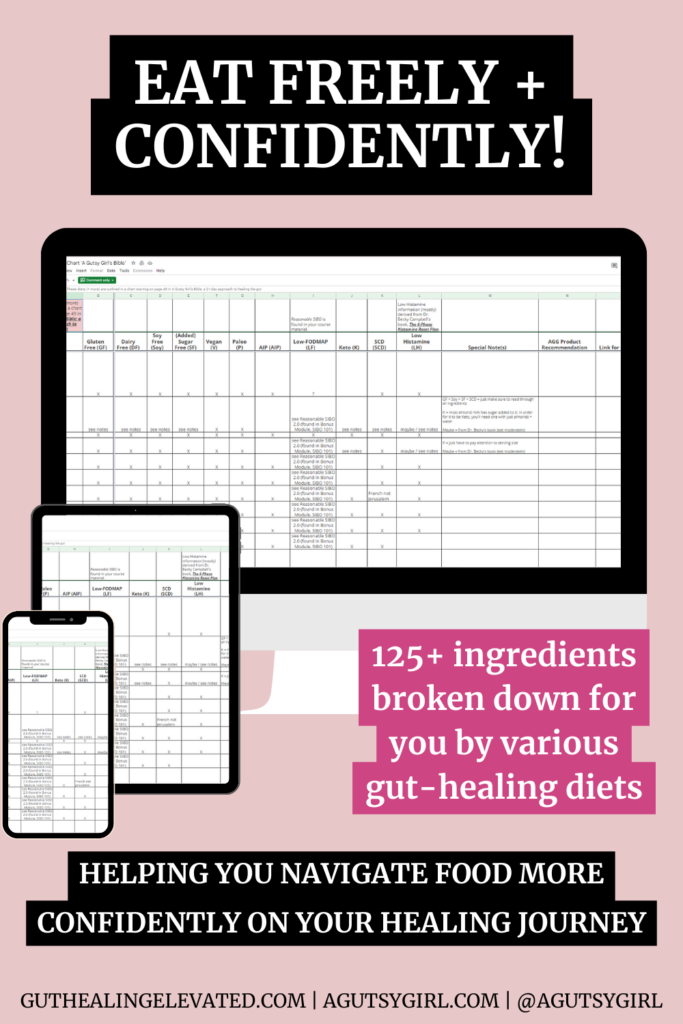


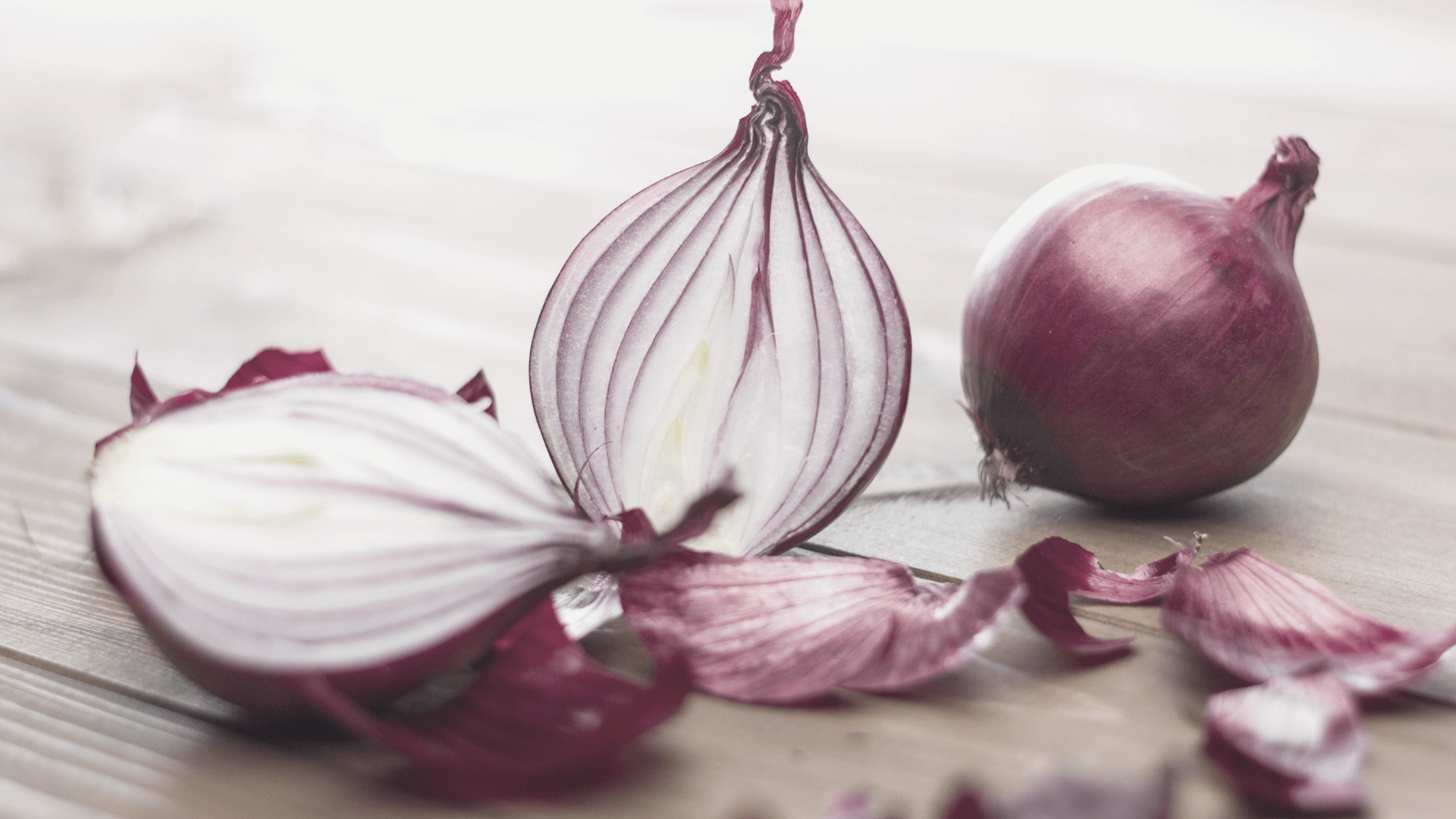

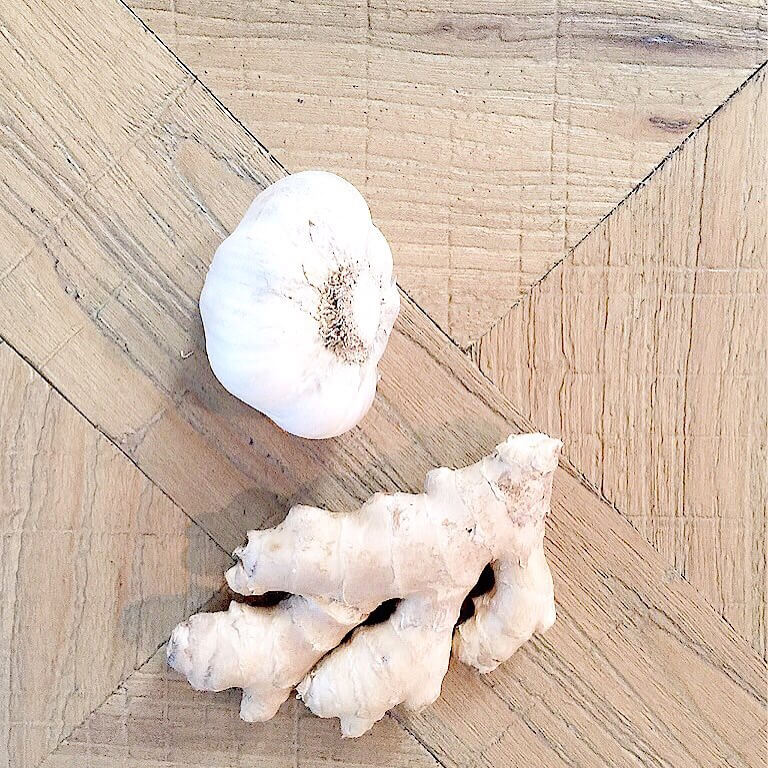

I’ve had bad allergies all of my life, though they’ve certainly gotten better as I started to eat healither. However, I recently started a probiotic and my allergies went crazy (possibly the worst I’ve ever had). After some research I learned that some strains produce histamine inside the body. My symptoms subsided once I stopped taking that probiotic and now I’m going to be looking for one that doesn’t contain L. buchneri, L. helveticus, L. hilgardii or S. thermophilus (source: https://www.healthline.com/nutrition/probiotics-side-effects#section3). Just thought I would share in case others have had similar issues!
I’ve had bad allergies all of my life, though they’ve certainly gotten better as I started to eat healither. However, I recently started a probiotic and my allergies went crazy (possibly the worst I’ve ever had). After some research I learned that some strains produce histamine inside the body. My symptoms subsided once I stopped taking that probiotic and now I’m going to be looking for one that doesn’t contain L. buchneri, L. helveticus, L. hilgardii or S. thermophilus (source: https://www.healthline.com/nutrition/probiotics-side-effects#section3). Just thought I would share in case others have had similar issues!
Thanks for weighing in!
Eggs are listed in both foods to enjoy and foods to eliminate.
Can you please explain if eggs are ok?
Thank you,
Gretchen
In my research, I did find it on both lists 🙂
M Y brother and I have incurable neuroendocrine cancer ( NET). High histamines in blood. 5-hiaa and we NET patients can not have any histamine high trigger foods which cause our tumors to grow,
Dear Sarah,
As me and both my kids need a low histamine diet, I am used to our cooking needs … when I was reading your list I found some important foods missing on the list you have to avoid!!
If you are sensitive to histamine you must not eat any legumes (including soya!), and any nuts (strawberries are nuts, too, but almonds are nut)! This makes vegetarian/vegan ideals very difficult!
Most HIT-people have problems with pork, beef and poultry is much better.
Wheat is not the main problem, but industrial yeast, so selfmade bread or good(!) old fashioned bakeries are an option.
I hope I can help some people with this information, as the journey of living with HIT can be rough …
Thanks for sharing!
Peanuts are very high histamine, as are the majority of nuts and seeds!